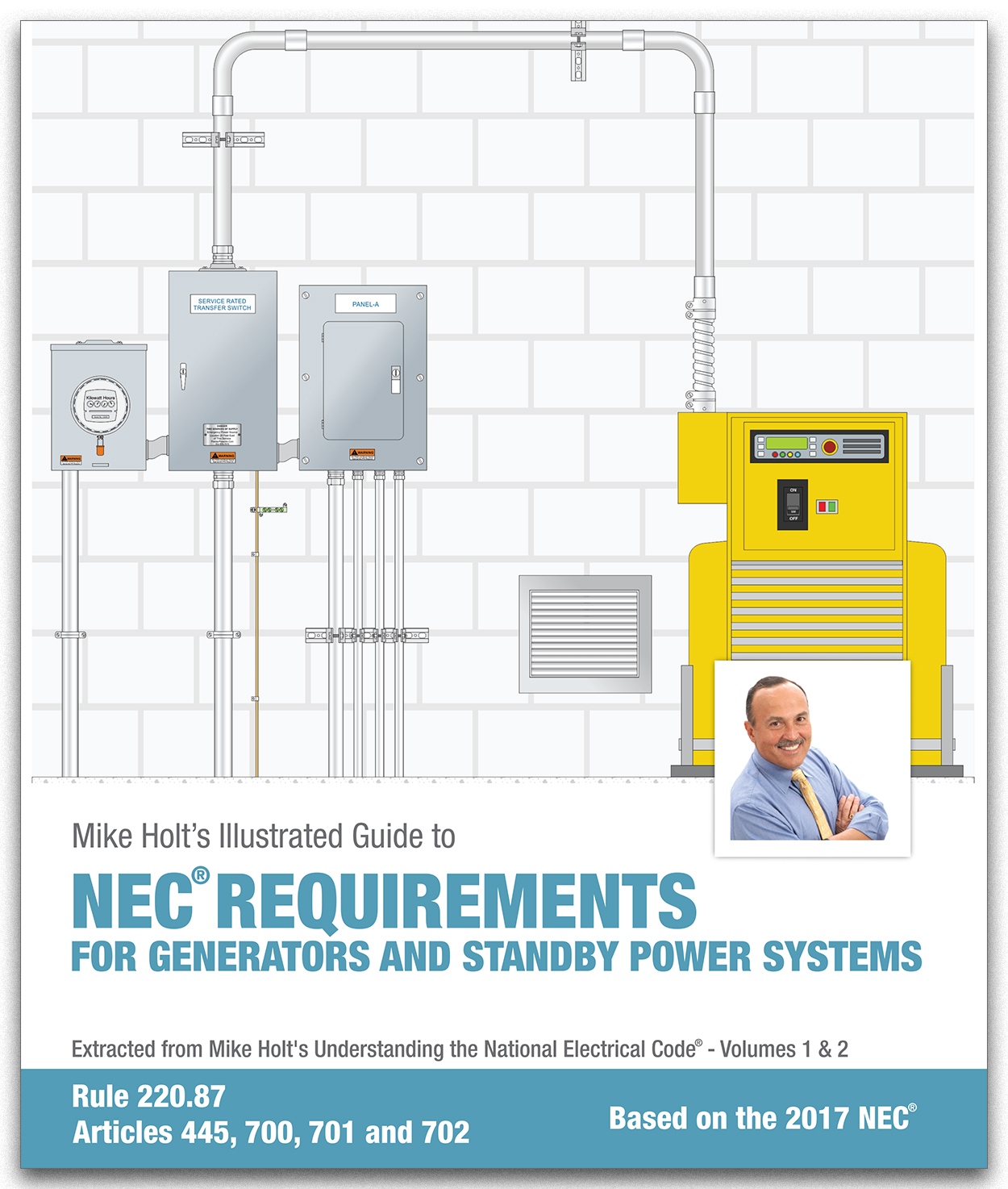fastline
Senior Member
- Location
- midwest usa
- Occupation
- Engineer
It dawned on me through some inet chats and my experiences with other pro installs that I might need to run down this rabbit hole for a minute to reaffirm my basis. In my profession, I am taught not to simply rely on "codes" as a basis for doing things, but use the "intent" and my own brain and education to ensure safety. Not that I think NEC is in any way wrong, but may not cover everything, in which people seem to find a shoe that fits and just run with it.
Many people install portable gensets on their homes for an emergency. I am not talking proper gensets, I am mostly talking about he Lowes variety. Everyone clings tight to this "bonding only in the load center past the meter" thing as an excuse to either disbond the generator, or run that ground wire right in. They use say 10/3 to a receptacle, maybe an interlock if you want to be proper, and code man signs off. However, if you connect a bonded generator this way, you will have current on the ground conductor between the generator and panel. That is not cool. Further, there seems to be some notion that if the generator is "grounded", it will create some sort of elusive ground loop.
I don't think people realize utility 1P power is 2 hots and a neutral. The utility establishes ground many times between power generation and distribution to avoid errant ground currents. The point being I could never agree to disbond a generator chassis from the neutral for obvious safety reasons! But this is somehow recommended!
Obviously disbonding in a load center is an option for a genset, but not always practical. What I have done many times is NOT even run a ground conductor between the genset and load center! There is a certain level of common sense here that anything conductive needs to be grounded but when you think about how people run these, they set a generator that is grounded to itself, never drive a ground rod, run current through a ground conductor, and call it "code".... It is a guarantee that if you carry a ground conductor between genset and panel, and do not disbond, there will be current on the ground conductor.
As well, it is ultimately about keeping the neutral at ground potential through proper earthing thus a ground rod for a genset!
I am curious what you guys run into and accepted practices? I just cannot agree with disbonding a metal chassis genset and let that chassis float! Can you imagine someone playing with that in a storm? But it also stands to reason that using an insulated ground conductor on a genset and letting it carry to a panel AND drive another ground rod may be the safer alternative. People talk about all these wild ground currents, but I think missing the main reasons we don't bond in other places. We do not want current on a ground!
Many people install portable gensets on their homes for an emergency. I am not talking proper gensets, I am mostly talking about he Lowes variety. Everyone clings tight to this "bonding only in the load center past the meter" thing as an excuse to either disbond the generator, or run that ground wire right in. They use say 10/3 to a receptacle, maybe an interlock if you want to be proper, and code man signs off. However, if you connect a bonded generator this way, you will have current on the ground conductor between the generator and panel. That is not cool. Further, there seems to be some notion that if the generator is "grounded", it will create some sort of elusive ground loop.
I don't think people realize utility 1P power is 2 hots and a neutral. The utility establishes ground many times between power generation and distribution to avoid errant ground currents. The point being I could never agree to disbond a generator chassis from the neutral for obvious safety reasons! But this is somehow recommended!
Obviously disbonding in a load center is an option for a genset, but not always practical. What I have done many times is NOT even run a ground conductor between the genset and load center! There is a certain level of common sense here that anything conductive needs to be grounded but when you think about how people run these, they set a generator that is grounded to itself, never drive a ground rod, run current through a ground conductor, and call it "code".... It is a guarantee that if you carry a ground conductor between genset and panel, and do not disbond, there will be current on the ground conductor.
As well, it is ultimately about keeping the neutral at ground potential through proper earthing thus a ground rod for a genset!
I am curious what you guys run into and accepted practices? I just cannot agree with disbonding a metal chassis genset and let that chassis float! Can you imagine someone playing with that in a storm? But it also stands to reason that using an insulated ground conductor on a genset and letting it carry to a panel AND drive another ground rod may be the safer alternative. People talk about all these wild ground currents, but I think missing the main reasons we don't bond in other places. We do not want current on a ground!


